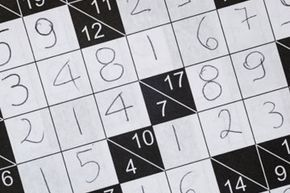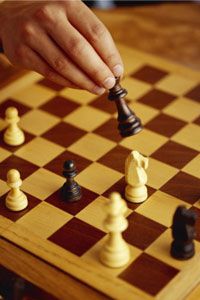In his book, "The Puzzle Instinct," author Marcel Danesi suggests that the human love of puzzles is both as mysterious and as innate as the laughter instinct. No one quite knows why people like to solve puzzles, just as no one knows why we laugh at something that amuses us. But Danesi does speculate that our love of puzzles can be chalked up to the same "mental catharsis" we love to feel at the resolution of dramatic suspense [source: Danesi]. Whatever the reason, it certainly feels good to solve a puzzle, evidenced by the crossword and sudoku puzzles that occupy honored places in the newspaper.
A kakuro puzzle is kind of a combination of the extremely popular crossword and sudoku puzzles. Like both crossword and sudoku, kakuro is easy to learn, but can range from simple to difficult to solve. An unsolved kakuro puzzle looks more like a crossword grid; the rules, however, are more similar to sudoku. Like sudoku, you solve kakuro by using logic to fill in the empty boxes with appropriate single digits (1 through 9). Unlike sudoku, however, kakuro also relies on math. Don't get intimidated just yet, though -- the only math required is simple addition.
Advertisement
In kakuro, each horizontal and vertical group of empty blocks comes with a "clue," which is a number. You solve the clue by filling in each group with numbers that add up to the clue number. The catch is that you can only use the numbers 1 through 9, and you can't repeat a number within one group. So, if the clue number is 4 and you have two boxes in the group, 2 and 2 won't work, because repeats aren't allowed in a group. Therefore, the only possible solutions are 1 and 3. But you still have to figure out exactly which box should be 1 and which should be 3. This will require finding out the possible solutions of other intersecting groups.
Kakuro also shares a similar history with sudoku. Although they have Japanese names, the Japanese are only credited with popularizing the games. The origins of kakuro are, in fact, American: The puzzle first appeared in 1950 in the United States. Dell Magazines published the game under the name "Cross Sums," and its inventor was a Canadian named James E. Funk [source: Shortz]. The game certainly has cross-cultural appeal, and it continues to challenge puzzle enthusiasts around the globe.
What's your best strategy for solving a kakuro puzzle? Add it all up on the next page.
Advertisement



